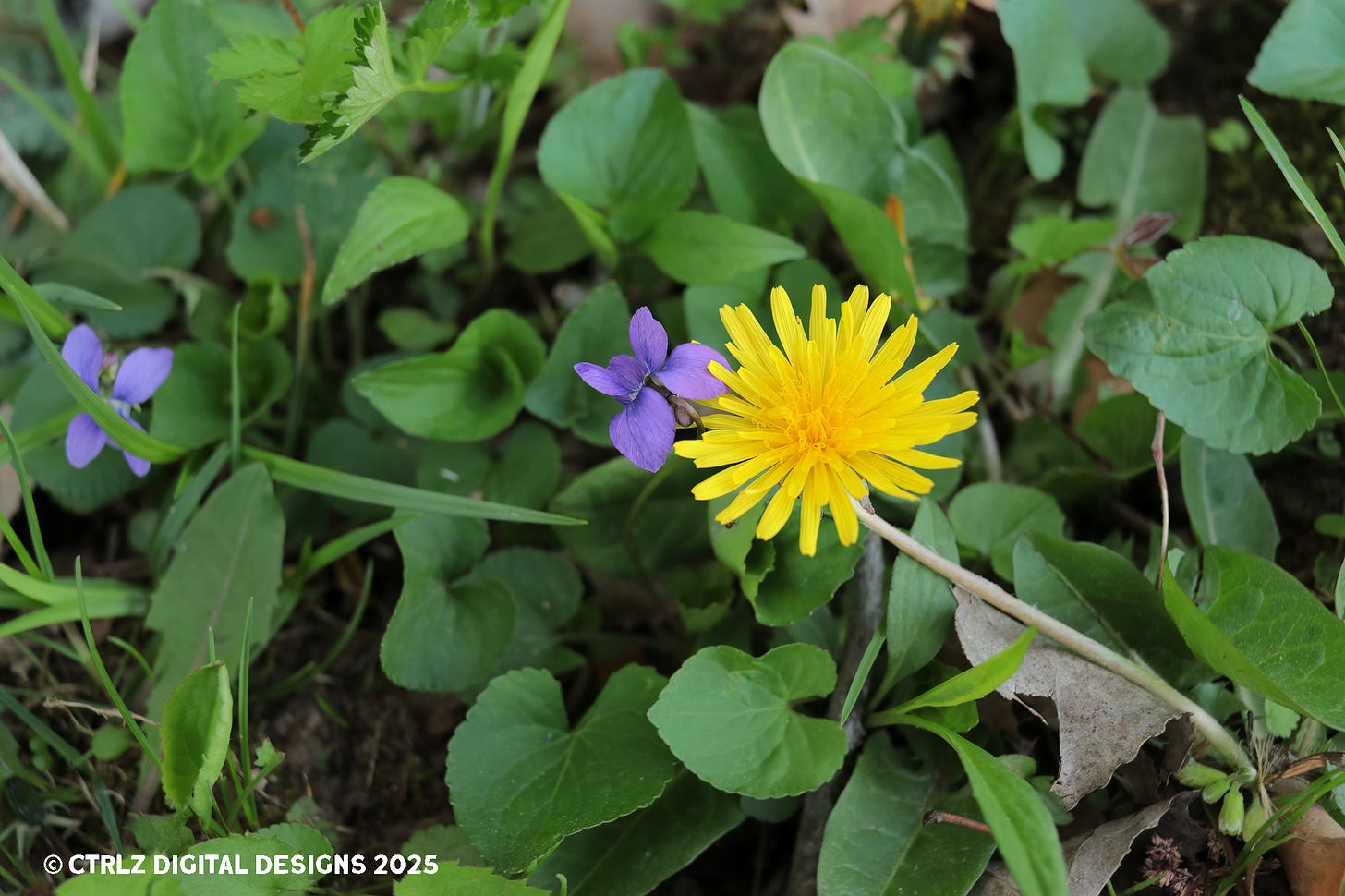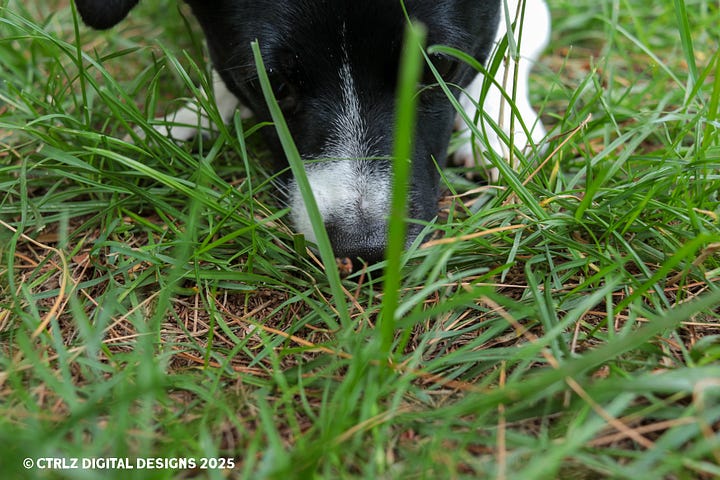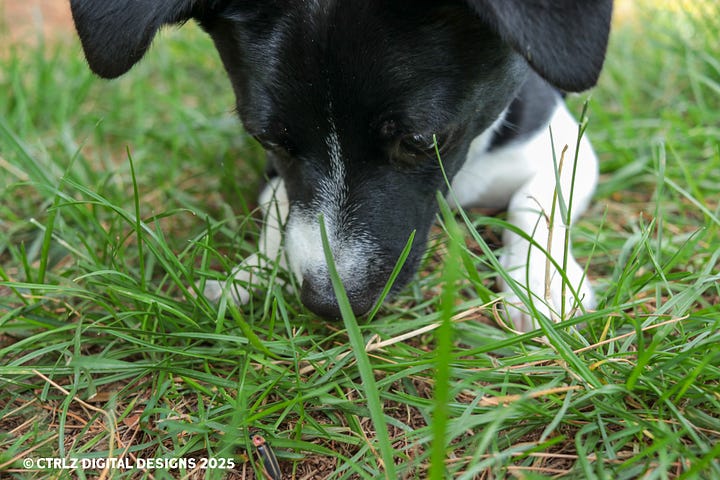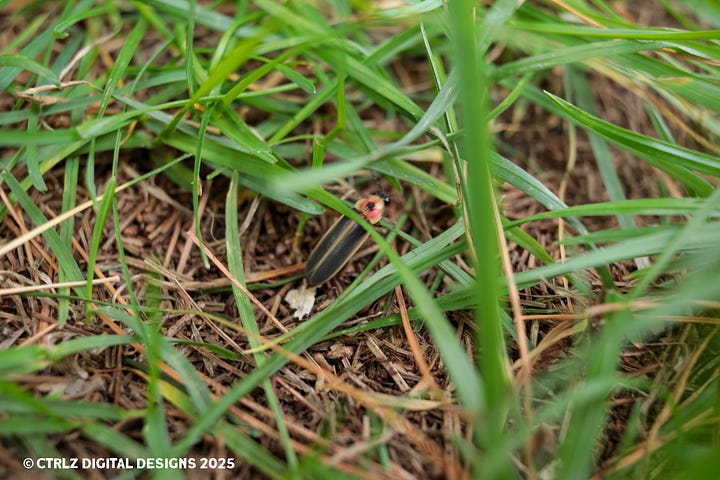“Hey, you! Yeah, you with the gardening gloves on. I’m going to need you to step away from that mower. And will you please put that rake away while you’re at it?”
Spring is finally coming!
It’s getting warmer. The time we’ve been waiting for is nearly upon us, and I’m dreaming of sunshine and swaths of gorgeous purple and yellow wildflowers taking over roadsides everywhere.
And if my husband will indulge me again this year, I’ll enjoy that glorious palette returning to my own yard as well.

Spring is a noisy time in my neighborhood
Unfortunately, there’s a looming threat to my vision.
Besides the sweet birdsong that ramps up this time of year, recently it seems one of the earliest sounds of spring includes lawn mowers belching to life after a winter of hibernation.
And is it just me, or is this happening earlier every year?
In my neighborhood, there are a few who take great pride in their lush, 100 percent green grass lawns and go to great extremes to maintain them. Their work ethic is impressive, and I do admire them for it.
I know a lot of people urging for more wild yards will say they find those lawns “boring” or even “ugly.” But I won’t. I’ve been raised to admire them by an industry that tells me they are beautiful, and honestly, I do in some ways really like the nice, unbroken and uniform swath of green.
The problem with perfectly green lawns
These lush, “weed free” green lawns present quite a load of problems, however.
Most of these boil down to cost. The lawns we have been trained to covet cost a lot to maintain:
time
money
energy
resources
And they cost a lot of stress as well, as we feel the need to “keep up with the Joneses.”
I know this for sure, too, because once I hear one mower, I hear another, and another.
Once the cacophony of unnatural sounds permeates the neighborhood, it typically means my husband and I are ready to have our first big conversation regarding lawn care for the year. He laments that he doesn’t want to be the “last one on the block” to complete that first springtime mow, and I tell him to enjoy some more time off and to take a walk with me instead!
The “perfect vision” of a lawn does not just rely on mowing, of course. But in order to keep this post to a reasonable length, and because I am not a scientist, I am not going to detail the studies about various weed killers and their impact on every living thing on the planet. There are various options here too, but I will defer to those who know much more than I do in this area.
Instead, I’d like to focus on just one, hopefully less contentious topic: mowing the lawn.
“No Mow May”: Its intention and its limitations
In 2019, the “No Mow May” campaign began in the United Kingdom. Since then, its popularity has spread.
The original idea was to pause one’s mowing during May to allow the wildflowers to grow during a time when early pollinators are especially desperate for their food for sustenance.
Many have embraced the movement, also citing the reduced impact on air quality and a lesser toll on both capital and natural resources.
Even more, the idea of a month free of the labor of mowing is not without its merits!
But the concept does have its drawbacks, including the fact that many home owners begin mowing before May even begins, and it speaks nothing to mowing practices throughout the remainder of the year.
In some communities, homeowner associations present an obstacle to this approach and some worry about breaking city codes.
For some, too, this idea is just way too daunting to even consider. When it’s a spring like we experienced last year, that grass grows FAST, and it can be a beast to tame once an entire month goes by.
One possible alternative
I’ve been thinking a lot about environmentalism lately, and I want to continue to add more eco-friendly practices to my life.
I am FAR from living a zero-waste lifestyle:
I don’t buy everything in bulk and carry it home in fabric bags.
I tried composting but the habit didn’t stick (though I plan to try again soon).
And I take long hot showers that are most definitely not green.
However, I have made a few changes that I’m proud of:
We use wool balls instead of dryer sheets. (Yes, I do use my dryer and not the sun.)
We switched to bamboo toilet paper. (I promise it’s much better than you think! Ask me about it if you’re curious.)
The majority of flowers and plants in our yard are native species.
And this year, I hope to convince my husband to adopt a low-mow habit.
If not mowing for an entire month sounds unfeasible, maybe “Low-Mow Spring” could fit your household better as well.
Instead of spending an entire month not mowing at all, the goal is to mow less frequently than you normally would and to allow the grass to stay a little bit higher.
The benefits of a low-mow approach
In the spring, keeping your grass higher provides safe cover for fireflies and caterpillars and allows any present native wildflowers like violets to grow and help feed pollinators.
Even some non-native wildflowers like dandelions can provide at least a little benefit to bees.
Would ripping up my lawn and reseeding with a more natural combo of native grasses and flowers be even better? Yes, but that’s just not possible for us right now.
Instead, I like to think of my plan as going “greener,” which I’ve decided is my ultimate goal. I need something that fits our energy levels, our family, and this stage in life, not to mention our checkbook! Doing something is always better than doing nothing, so I’m setting “perfect” aside and doing the best I can right now.
And I’d love it if you’d join me!
So before you wheel out that mower, here’s a short checklist for reference before you begin:
Temperatures should consistently be above 40°F before beginning to mow for the season.
Some experts suggest your grass should be at least 3.5 to 4.5” before completing your first mow.
Mine is literally the last house on the block with a yard that has not been mowed this spring.
If you cannot check off all three of these list items, I hope you will consider an alternative activity with your newfound time and celebrate this beautiful day with a walk instead!
Or maybe you could hang out in your not-so-perfect lawn with your best friend. You may be surprised at how much you both enjoy it.




The caption function wasn’t working: Above, a small photo story for your enjoyment: A puppy’s first lightning bug. (Or firefly…but we call them lightning bugs here in Ohio!)
I’d love to hear your thoughts. Have you tried “No Mow May”? What do you think about trying a low-mow season? Do your pets enjoy a more natural backyard as much as mine does? :)






Amanda, I'm excited to find your substack ... your work really resonates. In addition, because there are no coincidences, I was looking for my own Note celebrating the first violet of spring and the search pulled up your violet too. I'm so pleased it's violet season ... this will be my first year of foraging and i cannot wait to get brave and snack on a blossom. We avoid mowing as long as possible, compost with enthusiasm, and grow happy vegetables. Take care!
Love the no mow months everywhere around the world. The awareness for beneficial insects is growing among people. For us, slow mow is the winter when it’s dry season. It allows for all the tiny purple wildflowers to grow and the bees love them. Our neighbor installed an apiary a few months ago and we get lots of bee friends in the yard now. ❤️ Sadly, wet season is around the corner which means we have to start mowing twice a month otherwise the yard turns into an impenetrable jungle with lots of invasive species. (Florida has a problem with invasive plants and trees.)